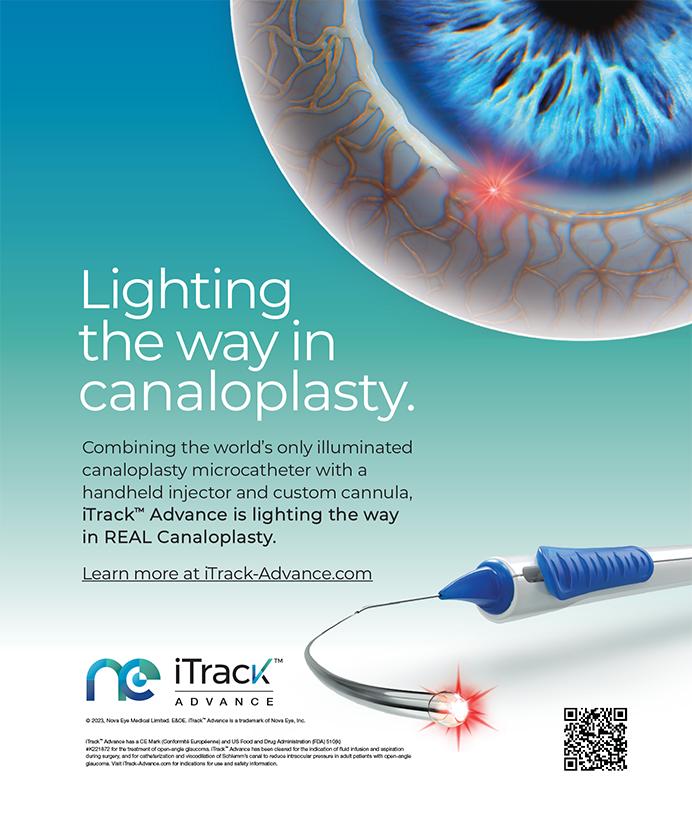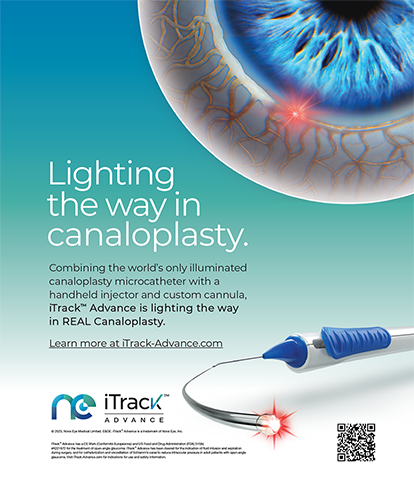Patient selection for refractive IOLs is probably the single most important determinant of success for you and your practice as well as for patients' satisfaction. The entire staff of a practice needs to understand the significance of patients' having a choice of technology. Of paramount consequence is how patients learn about the different available refractive IOLs. In addition, staff members must ensure that they receive the proper education and informed consent.
An ophthalmologist who wants to implement refractive IOL technology into his practice needs first to spend time with his entire staff (from the receptionist to the schedulers to the technical staff) to make sure everyone understands his commitment to and belief in this treatment modality. It is comforting for patients to receive answers to their questions from staff members who have a great deal of refractive IOL knowledge. A well-informed counselor certainly provides assurance and confidence to patients as they explore their lens-related surgerical options.
My colleagues and I try to explain to patients that they have choices in IOLs. Most of them are interested in learning more about their options. We provide educational material in the form of brochures, DVD, and VHS tapes. Additionally, we invite our patients to ask questions of our staff members and physicians until they are satisfied with the answers.
PATIENT SELECTION
The ideal candidate for a refractive IOL is one who understands the technology's abilities and limitations. Furthermore, patients with minimal astigmatism and an otherwise healthy ocular surface, retina, macula, and optic nerve are preferable candidates for refractive IOL implantation.
Ideally, physicians want IOL patients to have less than 1.00D of astigmatism. Managing cylinder in these patients is crucial. I have had great success with limbal relaxing incisions for patients with 1.50D or less of astigmatism. If patients have more than this amount of pre-existing, regular, symmetric astigmatism, I perform bioptics, where I cut LASIK flaps 1 to 2 weeks before proceeding with the cataract surgery. When the refraction is stable postoperatively, 3 to 6 weeks after surgery, I lift the flaps and perform LASIK in order to treat the preexisting refractive astigmatism or any residual sphere.
ADDITIONAL EVALUATION
Anatomically, the ocular surface needs to be healthy for IOL implantation. I always note the status of the meibomian gland orifices and lid hygiene. I pay attention to the ocular tear film to make sure that the cornea stays moist and that the wetting ability of the tears is satisfactory for good ocular health. It is important to stain the ocular surface with Lissamine Green dye (Accutome Inc., Malvern, PA) and to look for any evidence of dryness. Punctal occlusion, topical lubricants, and Restasis (Allergan, Inc., Irvine, CA) are often prescribed preoperatively to optimize the ocular surface before proceeding with refractive lens exchange or cataract surgery.
Furthermore, I perform a thorough retinal examination with pupillary dilation to ensure the health of the retina. I pay attention to the macula to ensure minimal, if any, changes in retinal pigment epithelium or the presence of drusen. My staff and I perform preoperative analysis with optical coherence tomography on all patients to rule out the presence of fine epiretinal membranes, which may be too subtle to detect by retinal examination. If this analysis indicates any such membranes, I exclude the patient from refractive IOL technology because of the high possibility of cystoid macular edema and ocular and visual distortion.
ASSESSING PATIENTS' VISUAL GOALS
An equally important part of patient selection with IOLs is to gain a general feeling of the patient's visual goals and expectations; they need to be realistic in order for the patient to experience success with refractive lens technologies. I prefer patients to be somewhat flexible and compromising in terms of their visual outcomes. In fact, I often describe what these lenses can deliver as a compromise to the visual system. If they are interested in superb vision for distance and near, then I would recommend a monofocal lens. An aspheric monofocal IOL would be the lens of choice for all patients who desire the best quality of vision possible. For patients who are willing to make a visual compromise for the convenience of being less dependent on glasses, then presbyopia-correcting or refractive IOLs would be an excellent option.
DISCUSSION TOPICS
My staff and I give a general discussion of the compromises that exist with refractive lenses, such as those with which reading vision is optimal and less optimal. We explain the need for finding the "sweet spot" with any refractive lens technology. We talk about possible adjustments in their personal life, such as adjusting their lighting situations and the location of their computers based on refractive lens technologies. We also broach nighttime vision, because all of the refractive lens technologies are associated with scotopic visual symptoms. Fortunately, these symptoms, including halos, typically do not affect nighttime driving activities. I provide patients with statistics about the incidence of night vision symptoms; I believe there is roughly a 5 to 7 chance that these phenomena could be severe and possibly limit daily activities. I encourage patients to keep me well informed as to how they are doing. If they feel they have severe night vision symptoms, I may attempt an IOL exchange.
My staff and I also raise the topic of surgical touch-ups after patients' IOL surgery in the form of astigmatic treatments and fine-tuning their distance and near vision. We talk about the possibility of needing lens exchanges, piggyback lenses, and/or subsequent laser vision correction.
Finally, I remind patients that, although refractive lens technology is quite successful (90 of patients in my practice do not use glasses), approximately 10 still use spectacles. Most patients need them in low-light settings or occasionally for intermediate vision. Although this number of those that use eyeglasses is small, I think it is important for prospective IOL patients to understand the risk preoperatively. I tell our patients that some still use reading glasses for almost all of their daily activities. However, although not a guarantee, the success of these new lens technologies is quite high.
Section Editor Eric D. Donnenfeld, MD, is a partner in Ophthalmic Consultants of Long Island and is Co-Chairman of Corneal and External Disease at the Manhattan Eye, Ear and Throat Hosptial in New York. He is a consultant to Allergan, Inc., but acknowledged no finanacial interest in any products mentioned herein.Dr. Donnenfeld may be reached at (516) 766-2519; eddoph@aol.com.
Kerry D. Solomon, MD, is Professor of Ophthalmology, Medical Director of the Magill Laser Center, and Director of the Magill Research Center, all at the Storm Eye Institute, Medical University of South Carolina, Charleston. He is a consultant to Advanced Medical Optics, Inc., and Alcon Laboratories, Inc. Dr. Solomon may be reached at (843) 792-8854; solomonk@musc.edu.


